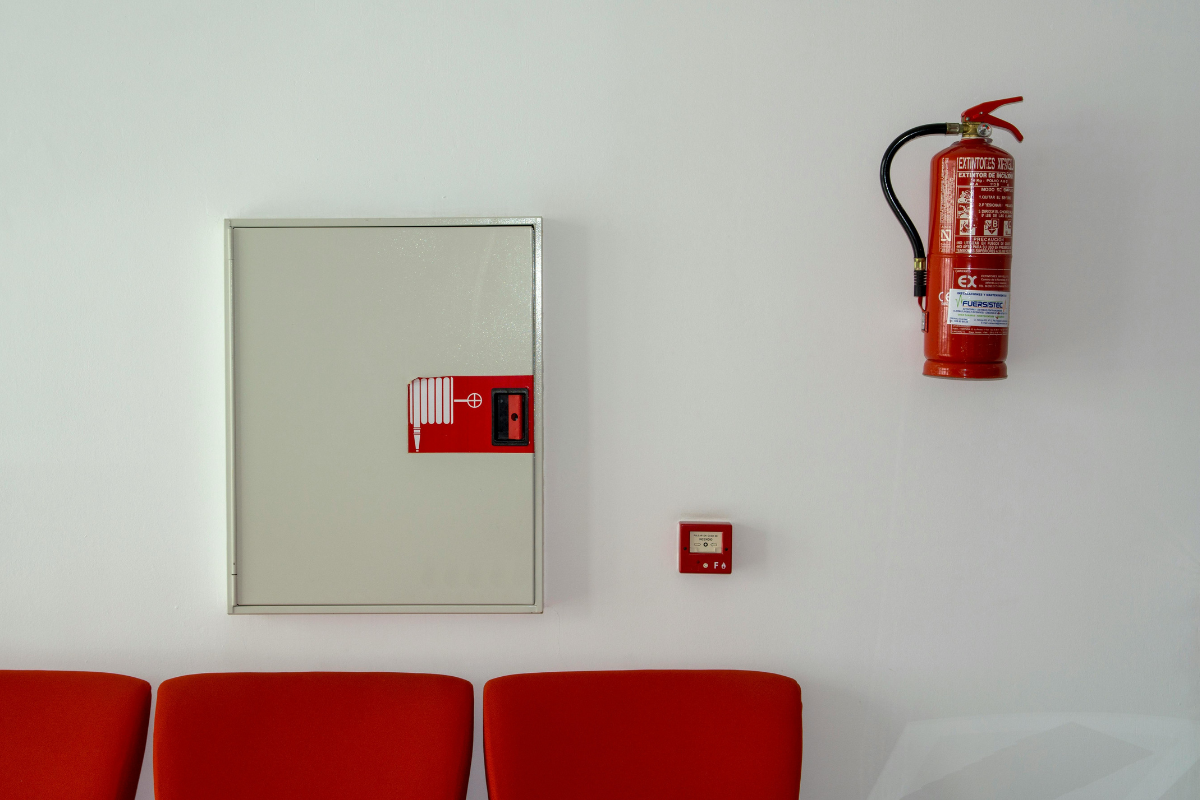Fire alarm systems are one of the most critical safety components in any building, yet they are often overlooked.
Here’s the problem: just because an alarm beeps during a test doesn’t mean it will work when it matters. Hidden system failures, neglected maintenance, and overlooked compliance risks can mean the difference between a controlled emergency and an accident that spirals out of control.

This article will break down:
The financial risks of a poorly maintained fire alarm system.
The most common fire alarm failures and their real-world consequences.
How a Cause-and-Effect Matrix can help you identify risks before they cause serious damage.
If you manage or own commercial buildings, this is information you can’t afford to ignore.
Ignoring fire alarm system maintenance isn’t just a safety risk - it’s a financial liability that can hinder operations and drain budgets.
Fines & Legal Action – Non-compliance with fire safety regulations (such as the Regulatory Reform (Fire Safety) Order 2005) can result in fines and legal disputes for responsible parties?.
Higher Insurance Premiums – Insurance providers factor in fire safety reliability when calculating premiums. A poorly maintained alarm system can lead to higher costs or denied claims in the event of a fire.
Unbudgeted Emergency Repairs – A failing system might require last-minute call-outs, urgent repairs, or even full system replacements, leading to significant unplanned expenses.
Business Disruption & Reputation Damage – False alarms, delayed response times, and safety failures can cause tenant dissatisfaction, operational downtime, and long-term reputational harm.
Property Damage & Loss of Life – A delayed fire response due to alarm failure can escalate property damage from minor incidents to complete building losses, not to mention serious injury or fatalities.
Bottom line: A Cause-and-Effect Matrix can help you identify where your fire alarm system is vulnerable before these financial risks become a reality.
Let’s break down the most common concerns faced by building managers and landlords - and how to fix them.
The Regulatory Reform (Fire Safety) Order 2005 requires that fire alarms be regularly maintained and fully operational. Other regulations include annual fire risk assessment and changing legislation, such as government updates post-Grenfell. If an audit finds issues like dead backup batteries or untested sensors, you could face fines or legal action from tenants?.
The Solution:
Use a Cause-and-Effect Matrix to identify fire alarm weak points before an inspection.
Ensure systems meet BS 5839-1 (British fire alarm standard) and all legal requirements.
Implement routine audits to ensure full regulatory compliance.
Frequent false alarms reduce confidence in the system and cause ‘alarm fatigue’, whereby alarms are ignored by tenants and staff. There is also a risk of call-out charges – fire brigades may fine commercial properties for false alarms. The disruption in operations and business reduces productivity.

The Solution:
Use a Cause-and-Effect Matrix to pinpoint the root causes of false alarms - whether it’s dust accumulation, sensor malfunctions, or system errors.
Schedule regular system recalibrations to prevent unnecessary activations.
Train staff and tenants on proper alarm procedures to reduce false triggers.You can read up on false triggers here.
Insurance providers assess fire risk when calculating premiums. If a fire alarm system is outdated or poorly maintained, buildings face:
Higher insurance premiums
Limited coverage or denied claims, if an incident occurs due to negligence
Financial loss from smoke damage, downtime, and tenant compensation, claims
A fire alarm system that appears to be functional may actually fail when it’s needed most. Backup batteries may be dead, manual call points blocked, or alarm signals not reaching the fire brigade.
Imagine an office building where a fire breaks out at night, but the alarm system isn’t properly linked to emergency services. The delay in response time results in an entire floor being gutted before help arrives.
The Solution:
Test backup power sources regularly to ensure alarms work during outages.
Conduct full-system simulations, not just sound tests, to confirm alerts reach the correct authorities.
Use Cause-and-Effect Analysis to identify weak links, such as faulty wiring or blocked call points.
If a critical sensor fails unexpectedly, the cost of emergency repairs or system replacements can be double or triple what planned maintenance would have cost.
The Solution:
Shift from reactive to proactive maintenance using a Cause-and-Effect Matrix.
Schedule preventive servicing to detect small issues before they become costly repairs.
Implement a budgeted upgrade plan instead of waiting for a full system failure.
A fire alarm system failure is more than just a compliance issue - it’s a financial risk, a liability, and a safety hazard. Don’t assume your system is working - prove it.
Using a Cause-and-Effect Matrix, facilities managers and property owners can identify hidden vulnerabilities, reduce costs, and prevent compliance failures. Investing in fire safety now means avoiding costly repairs, legal trouble, and potentially life-threatening disasters later.
Want to know if your fire alarms are up to standard?
We offer compliance audits, and system risk analysis to help you stay protected and compliant.
Contact us today for a fire alarm consultation!
020 3282 7605 | info@karsonsconsulting.com
Karsons Consulting are members of the Chartered Institute of Building Services Engineers, The Association of Consultancy and Engineering, British Institute of Facilities Managers and the Building Services Research and Information Association.